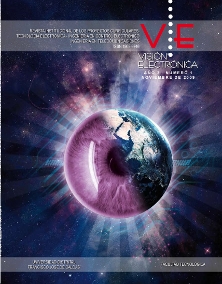DOI:
https://doi.org/10.14483/22484728.18442Published:
2019-12-06Issue:
Vol. 2 No. 2 (2019): Special editionSection:
A Context VisionElementa Curvarum Linearum more Apollonius that Descartes
Elementa Curvarum Linearum más Apolonio que Descartes
Keywords:
Historia de la geometría, Textos antiguos, Diagramas, Método cartesiano, Cónicas (es).Keywords:
History of geometry, Ancient texts, Diagrams, Cartesian method, Conics (en).Downloads
Abstract (en)
This document shows an analysis of the second book Elementa Curvarum Linearum written by Jan De Witt, published for the first time in the second edition of Geometry [1]. This writing is considered the first analytical geometry textbook. The influence of the work carried out by Apollonius in his conics book is studied, the use and interpretation of diagrams is debated. The development of the analytical method and the generation of curves by means of movement are also studied. Some propositions were renewed versions in terms of eighteenth-century mathematics, they used symbology, algebraic techniques and curves were classified by means of their symbolic representations, in these propositions a work closer to Apollonius is seen, the conic is not generated, it is assumed its existence, its nature is geometric. The study concludes that, although the textbook was published in the second edition of Geometry, the genesis of the curves remains geometric. The conics appear as objects of study in action immersed in the symbolic and algebraic practice characteristic of the time.
Abstract (es)
Este documento muestra un análisis del segundo libro Elementa Curvarum Linearum escrito por Jan de Witt, publicado por primera vez en la segunda edición de la Geometría [1]. Este escrito es considerado el primer libro de texto de geometría analítica. Se estudia la influencia del trabajo realizado por Apolonio en su libro cónicas, se debate el uso e interpretación de los diagramas. También se estudia el desarrollo del método analítico y la generación de curvas por medio de movimiento. Algunas proposiciones fueron versiones renovadas en términos de las matemáticas del siglo XVll, usaron simbología, técnicas algebraicas y se clasificaron curvas por medio de sus representaciones simbólicas, en estas proposiciones se ve un trabajo más cercano a Apolonio, la cónica no se genera, se supone su existencia, su naturaleza es geométrica. El estudio concluye que, aunque el libro de texto se publicó en la segunda edición de la Geometría la génesis de las curvas sigue siendo geométrica. Las cónicas aparecen como objetos de estudio en acto inmersas en la práctica simbólica y algebraica característica de la época.
References
H. Bos, “Redefining Geometrical Exactness: Descartes' Transformation of the Early Modern Concept of Construction”, New York: Springer, 2001.
D. Dennis, “Rene Descartes' Curve-Drawing Devices: Experiments in the Relations Between Mechanical Motion and Symbolic Language”, Mathematics Magazine, vol. 70, no. 3, pp. 163-174, 1997. https://doi.org/10.1080/0025570X.1997.11996527
A. Grootendorst, J. Aarts, M. Bakker, R. Erné, “Jan de Witt's Elementa Curvarum Linearum. Liber Secundus”, New York: Springer, 2010. https://doi.org/10.1007/978-0-85729-142-4
D. P. Apolonio, “Conics”, em Britannica Great Books 11, London, Encyclopedia Britannica, INC, 1952, pp. 597-804.
R. Descartes, “Discours de la méthode pour bien conduire sa raison, et chercher la vérité dans les sciences”, Leiden: Leyden , 1637.
R. Descartes, “Geometria a Renato Des Cartes anno 1637 gallice edita, postea autem..., F. v. Schooten”, Ed., Apud Ludovicum & Danielem Elzevirios: Apud Ludovicum & Danielem Elzevirios, 1659 - 1661.
R. Descartes, “The Geometry”, New York: Dover Publication, 1954.
How to Cite
APA
ACM
ACS
ABNT
Chicago
Harvard
IEEE
MLA
Turabian
Vancouver
Download Citation
License
Copyright (c) 2019 Visión electrónica

This work is licensed under a Creative Commons Attribution-NonCommercial 4.0 International License.
1.png)
Attribution-NonCommercial 4.0 International






.jpg)





